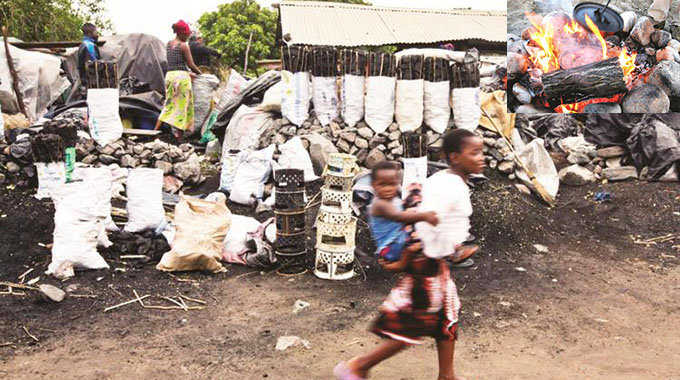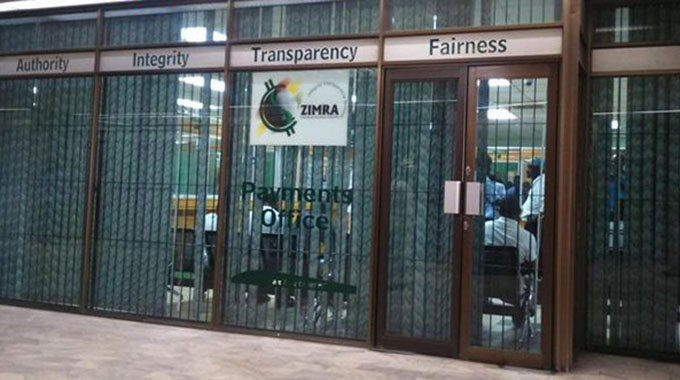Power cuts drive deforestation

Sifelani Tsiko Agric, Environment & Innovation Editor
Peak winter energy demands and the rolling out of power cuts lasting up to more than 10 hours daily in most parts of the country is driving up the deforestation of large tracts of forests as wood becomes the main source of heating and cooking for the majority of the poor.
Zesa, the country’s power utility, imposed the worst rolling blackouts in three years last month, with households and industries going without electricity due to lack of foreign currency, declining water levels at Kariba hydropower station and obsolete equipment at the Hwange Thermal POwer Station.
Many settlements throughout the country are now receiving less than seven hours of electricity per day from the national grid, pushing up demand for firewood and charcoal in both urban and rural areas.
Most families are increasingly relying on firewood and charcoal as prices for imported liquefied petroleum gas continue to rise.
Charcoal syndicates operating in Hwange and Muzarabani have emerged as the major commercial drivers of deforestation, according to the Forestry Commission.
“There has been a sharp rise in the charcoal business in the last few months. The problem is now serious and just recently we impounded 1 000 bags of charcoal which were being illegally trafficked to Harare,” says Forestry Commission spokesperson Violet Makoto.
“Deforestation is rampant in Hwange and Muzarabani districts where the syndicates are operating from. Power shortages have compounded the situation and the charcoal syndicates have a ready market in the lucrative Harare market.”
She says there is a massive movement of charcoal to Harare and most other urban areas which are reeling from power cuts rolled out by Zesa.
“The 1 000 bags of charcoal we confisticated are just the tip of the iceberg. We are concerned about the cutting down of the indigenous mopane trees which can take more than 50 years to reach maturity,” Makoto says.
“It’s now as issue of concern to us. The cutting down of large swathes of trees and the making of charcoal remains illegal according to the country’s laws. Our teams are on the ground tracking the syndicates.”
The Forestry Commission and the Environmental Management Agency estimate that tobacco farming has been contributing about 15 percent to the loss of indigenous forests annually due to tobacco curing.
Apart from tobacco curing, the opening up of land for agricultural expansion, infrastructure development, charcoal making and use of firewood for heating and cooking has also compounded the problem.
As a result, the agencies say about 330 000 hectares of trees are lost every year due to these factors.
Zimbabwe has lost vast tracts of indigenous woodlands, and environmental agencies estimate that local forest cover for the country is now at 45 percent — a critical level which now requires massive tree planting programmes.
Environmentalists now say deforestation is a symptom of Zimbabwe’s long-term energy crisis which urgently needs to be addressed through investment and promotion of renewable energy sources such as solar, wind and others.
“Pressures on Zimbabwe’s forestry resources are a direct result of household energy insecurity,” says a Harare-based environmentalist.
“Power cuts are now worse and most families in urban areas are now depending on woodfuel for survival. If both rural and urban families had reliable access to electricity then they would be not need to make such extensive use of firewood.”
Adds Makoto: “Power shortages have compounded the problem and this is having a serious impact on deforestation. As a country we need to find lasting solutions to the energy crisis we are facing. Greater emphasis must be placed on renewable energy sources — solar, wind and hydro.”
A bag of charcoal now sells for between $25 and $50 in Harare while firewood prices depend on the quantity and size of wood.
“The charcoal business heavily relies on the indigenous mopane tree which does not regenerate at a faster pace,” says Makoto. “We are worried about this and all stakeholders need to put their hands on the deck to tackle this menace.”
More than 70 percent of people living in rural areas use wood as their primary source of fuel.
Rapid urbanisation has compounded the problem as more people — both in rural and urban areas — have no access to electricity.
The country’s environmental agencies — EMA and the Forestry Commission — are underfunded and understaffed and this makes it difficult for the entities to combat deforestation.
“Forests are an important resource for our economy. If you have forests you have trade in timber and non-timber forest products,” says Makoto.
“Forests are critical in reducing carbon in our environment and they play a big role in climate change-related matters.”
Zimbabwe has relatively modern forest laws that are based on sustainable forest management.
However, the country needs to mobilise resources to enforce the legislation which seeks to protect the country’s forestry resources.
Concerns have been raised about people who cut down trees to make charcoal for sale in Matabeleland North and Muzarabani district.
Charcoal dealers have gone unpunished due to weak surveillance and policing.
Charcoal remains one of the biggest informal businesses in Africa. It is the widely used fuel by the continent’s fast-growing urban poor, who, in the absence of electricity or gas, use it to cook and heat water.
According to the UN, Africa accounted for three-fifths of the world’s production in 2012 and this is the only region where the business is growing. All this, however, is happening at a huge cost to the environment.
Through the National Tree Planting Day, Zimbabwe plants 15 million trees per year, but this is a far cry from the large tracts it is losing every year.
Zimbabwe aims to increase its forestry cover by 10 percent by 2030.
Reduced output at the country’s largest hydro plant and ageing coal-fired generators have forced Zimbabwe to roll out massive power cuts, forcing many to rely on wood fuel.
Zimbabwe last experienced such serious blackouts in 2016 following a devastating drought.
The country is now producing 969MW of electricity daily against peak demand of 2 100MW.
The power gap has forced many households to to shift to woodfuel, a move which is likely to decimate large swathes of forestry cover.
With Zesa struggling to provide adequate connections to growing demand in both rural and urban areas, Zimbabwe should push aggressively for new off-grid solutions to help the country achieve universal access to sustainable energy by 2030.
The recent commissioning of Zimbabwe’s first solar-powered 99kw mini-grid in Gwanda rural district, which is now benefiting more than 10 000 people, is a sustainable model which must be replicated across the country.
Apart from this, investment in micro -hydropower stations, expanding access to electricity and the promotion of efficient cooking stoves could help reducee deforestation over time.
It’s the way to go.









Comments